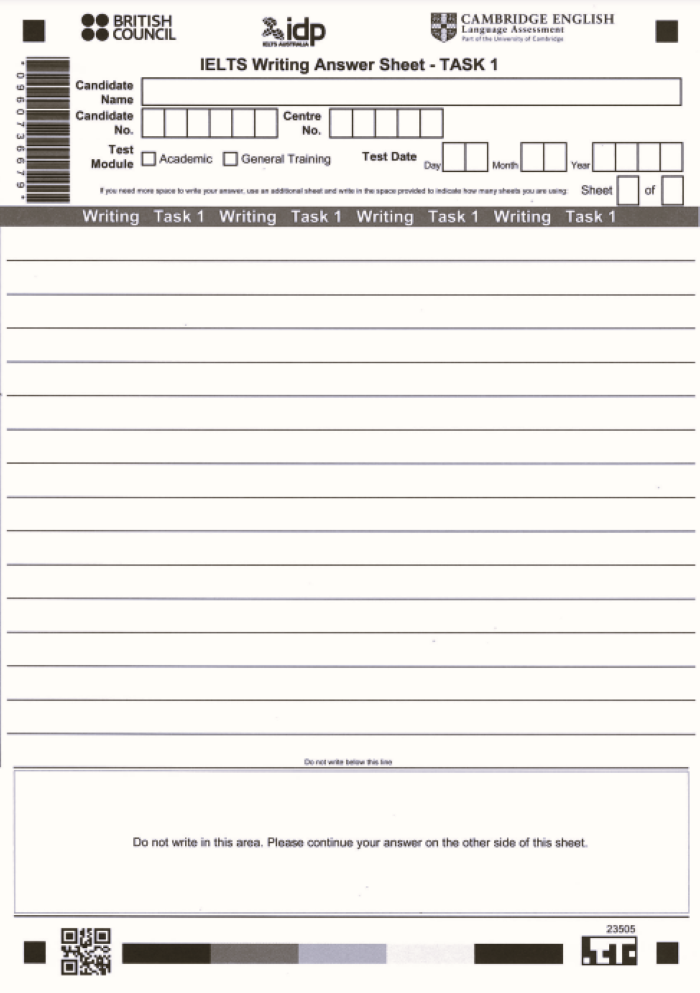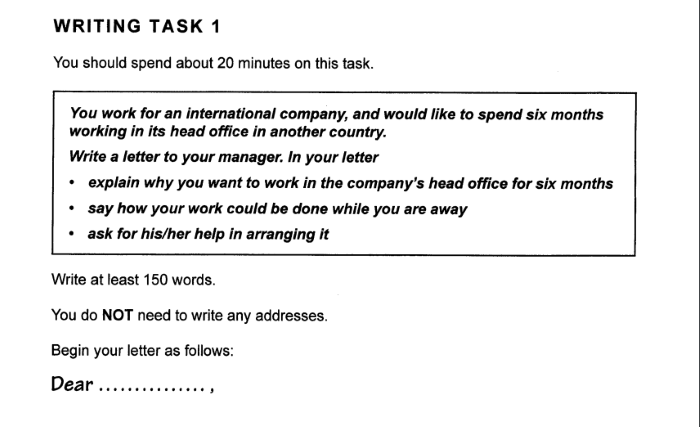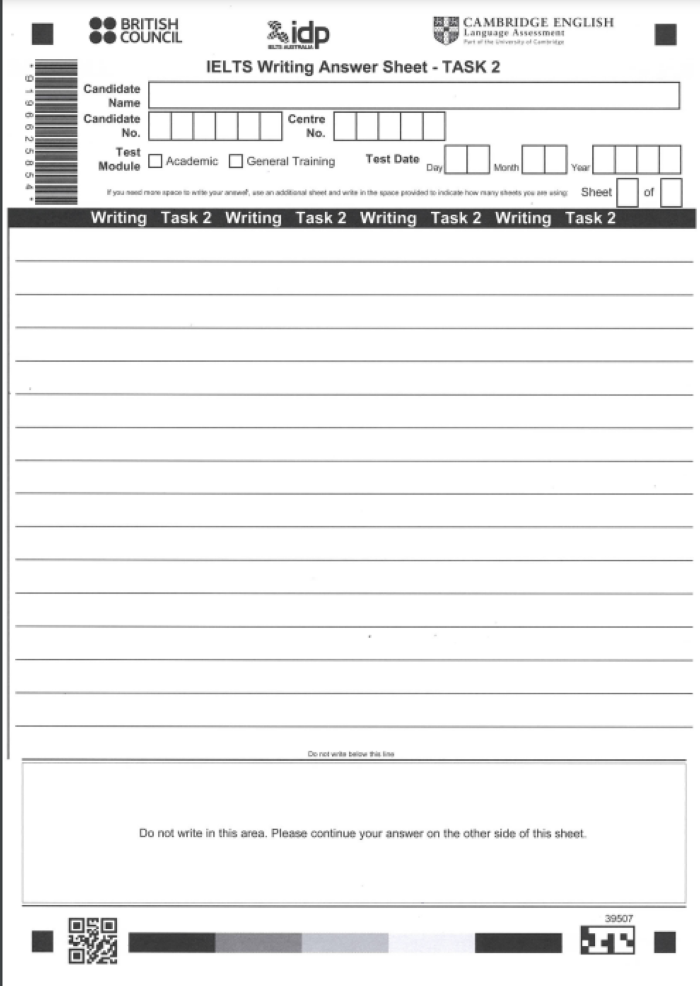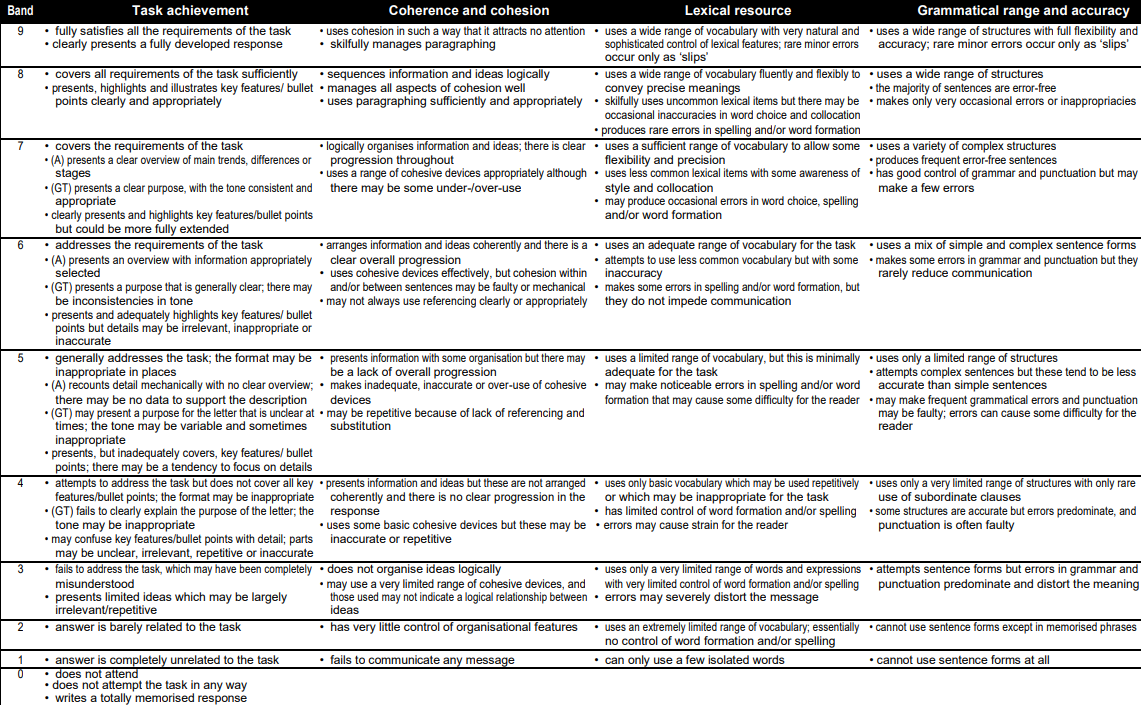Select language
Introduction to the Writing Test
(15 mins)
The Writing Test is the third paper you will take on test day. It is split into two parts: Task 1 and Task 2. You have 60 minutes to complete both tasks.
Task 1 takes the form of an analytical report (Ac), or a letter (GT) of at least 150 words in length.
.png)


Task 2 is a discursive essay of at least 250 words in length.


Task 1 is worth a third of the total marks for writing, and Task 2 is worth two thirds, so you should try to split your time accordingly: approximately 20 minutes to complete Task 1 and 40 minutes to finish Task 2.
The writing test is assessed by Cambridge qualified writing test assessors using a rubric very similar to the one shown below.

Although the full rubric might look very complex, as a test taker you only need to have a clear understanding of the four assessment criteria and the two or three descriptors used for each.
The four assessment criteria are:
- TASK ACHIEVEMENT (TA)* - how well you address the requirements of the task.
- COHERENCE & COHESION (CC) - how well you present your ideas and structure your response.
- LEXICAL RESOURCE (LR) - use of vocabulary.
- GRAMMATICAL RANGE & ACCURACY (GRA) - grammar.
(*The Task 1 and Task 2 rubrics differ only in regard to the first assessment component: Task Achievement (TA) in Task 1 and Task Response (TR) in Task 2.)
Under the headings in each column you will see a list of bullet-pointed descriptors which describe the writing features which must be demonstrated by the candidate in order to achieve the corresponding band score rating.
The IELTS writing test assessor has all of these criteria in mind and, as he/she reads through your written response, is looking for examples of each in order to accurately assess and grade the level of your writing ability.
To be awarded a certain band level rating you must be able to demonstrate all of the descriptors specified at the corresponding band level. We'll cover each of the four assessment criteria, their descriptors, and how they relate to each of the IELTS writing test tasks, in Lessons 3(i) to 3(iv).
Read these example (high-level) model answers and answer the comprehension questions for each.
example.png)
example.png)

End of Lesson 03


